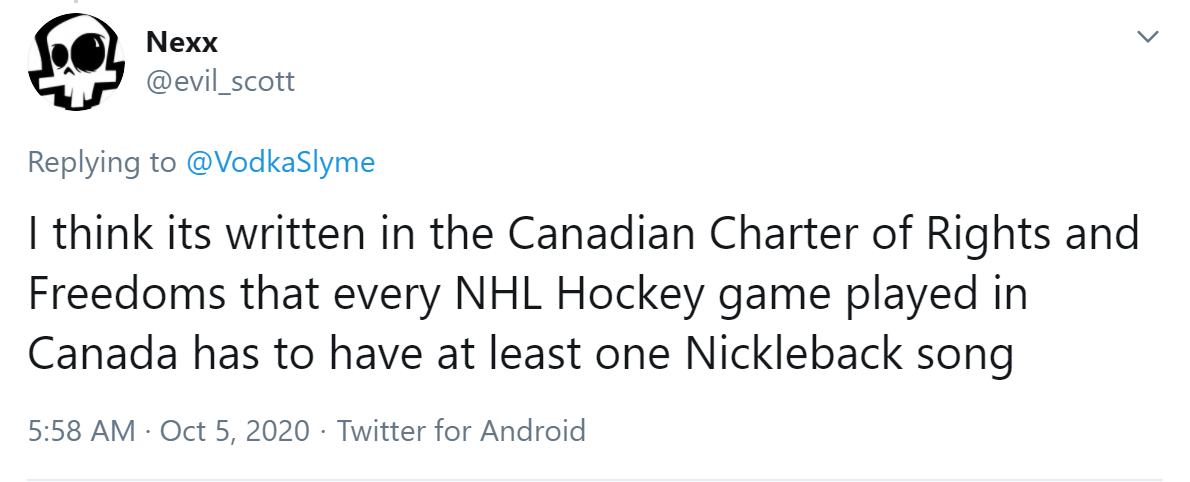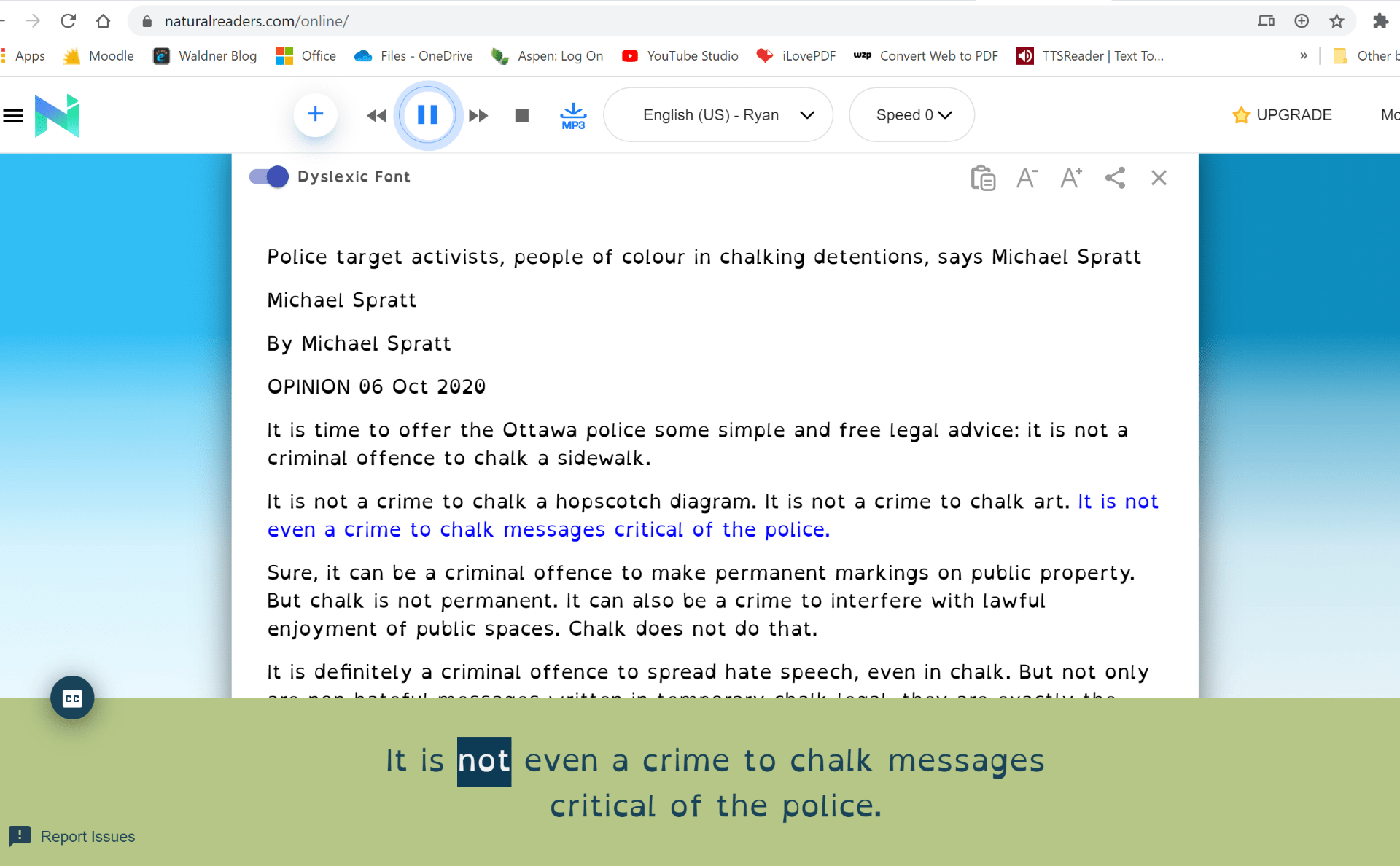October
7
02.0 The Balance of Rights and Freedoms – Intro Activity
You may already be aware of how protected the rights are of citizens in Canada. We live a lifestyle free from much of the conflict that other citizens face daily in their own countries. Understanding the source of that protection is an important part of understanding your relationship with your country.
source of that protection is an important part of understanding your relationship with your country.
The Canadian Charter of Rights and Freedoms – What’s it about?

Before Studying it, Compare Your Understanding with a Peer/Group:
- Method of Collaborating: Decide to EITHER a) join a shared Google Doc together and develop responses collaboratively to the questions that follow OR b) go outside (in the beautiful fresh air) and audio record your discussion and shared thoughts to the following questions. OR alternative c) join an Online Teams Meeting and Record your session.
- Either choice of a or b – make sure you eventually share your collaboration with me directly.
- If choosing a – share the doc to my @gmail acct
- If choosing b – share the audio conversation to my @sunwest acc
- If choosing c – join a Breakout Room in our Social 10 Teams Channel. The recording you create will be accessible to me through the program.
- Either choice of a or b – make sure you eventually share your collaboration with me directly.
- Discussion Questions to Ponder Together Before Reading: Record your responses in either the Google Doc, Audio Recording, or Teams call
- Background: What do you think the Canadian Charter is and/or what does it do for Canadians?
- Cause and Effect: Imagine if it did not exist in Canada or offer any protection to Canadians. Can you list ways (at least 4?) the lives of Canadians today might be altered?
ex: You could be arrested and held indefinitely without a set trial date or even access to a lawyer. - Judgement: The Canadian Charter offers many protections to citizens, protections from each other and from the government. Do you believe there is one area of protection more important than others?
ex: Do you think protecting a person’s Legal Rights is more necessary/important than protecting a person’s Voting Rights or Language Rights?
Yes/No: Explain your response - Connection to Last Topic: What does it say of the relationship between Canadians and their government (our Social Contract) that this is a government protection offered to Canadians?
- Read the following article together and discuss: Document your discussion and answers by in either the Google Doc, a recording, or Teams call for parts 2-5. It is optional to also record step 1, the reading.
-
- Read the following article together. “Chalking on Sidewalks is Not a Crime”
- Options for reading the text:
- You can use the Rewordify site to simplify the language of the article
- You can also paste the text into a Text to Speech website to listen/read along for better understanding
- The full text of the article is posted below as a Comment. You can copy it from there for any of the uses above.
- Options for reading the text:
- Summarize the main points of the article.
- What supporting points does the article provide to prove it’s point of concern?
- Identify the Charter Right protecting the behaviour described in the article and how you understand it protects Canadians.
- Your opinions: Do you understand the motivations of both sides of the conflict: the police motivations and the protestor motivations? Is there one side that is more in the right in these scenarios?
- Read the following article together. “Chalking on Sidewalks is Not a Crime”
-
- After Reading:
- Personal Application: Consider for yourselves – what Chalk Messages would you write on Kenaston’s sidewalks, if you had the opportunity?
- Post responses as a Comment to this Blog Post at the bottom.

- You can select more than one message you’d write.
- Give an explanation for each chalk message – what motivates you to want to share this with your community?
- Post responses as a Comment to this Blog Post at the bottom.
- Personal Application: Consider for yourselves – what Chalk Messages would you write on Kenaston’s sidewalks, if you had the opportunity?
Narrated audio of the article. Male voice, Dyslexic-supportive font, and speed 0.

Full text of the article if you want to copy/paste it into a program for support:
Police target activists, people of colour in chalking detentions, says Michael Spratt
Michael Spratt
By Michael Spratt
OPINION 06 Oct 2020
It is time to offer the Ottawa police some simple and free legal advice: it is not a criminal offence to chalk a sidewalk.
It is not a crime to chalk a hopscotch diagram. It is not a crime to chalk art. It is not even a crime to chalk messages critical of the police.
Sure, it can be a criminal offence to make permanent markings on public property. But chalk is not permanent. It can also be a crime to interfere with lawful enjoyment of public spaces. Chalk does not do that.
It is definitely a criminal offence to spread hate speech, even in chalk. But not only are non-hateful messages written in temporary chalk legal, they are exactly the type of free expression that is guaranteed by the Canadian Charter of Rights and Freedoms.
It seems, however, that cop fragility runs high when they are confronted with chalk criticisms. There have been at least three incidents of threats of arrest and prolonged detentions of chalkers by the Ottawa police.
In June, an Ottawa woman was detained by the Ottawa police for writing “Black lives matters” in chalk on a public sidewalk. The message was not hate speech, and there was no interference with anyone’s use of the sidewalk. The police threatened to charge her with mischief because she did not have permission to write on the sidewalk.
The next day, Ottawa’s mayor Jim Watson tweeted that his permission is not needed to chalk on the sidewalk.
Then in July, Ottawa University professor Justin Piché wrote “Abolish Prisons” in chalk on the sidewalk outside the Ottawa police station. He was confronted and detained by police.
Once is a chance, two times is a pattern, three times is a pathology.
In September, the Ottawa police again detained two women who were writing in chalk on a public sidewalk. Their suspected crime? They chalked messages like, “Racism hurts everyone” and “End Police Brutality” and “Racism, see it stop it.”
These chalkers were not committing any crime. There was no reason to detain them. There was nothing to investigate. Instead, three police officers trampled the rights of citizens engaged in protect free speech activities. The only conclusion is that the police disagree with the proposition that racism does indeed hurt everybody or that there needs to be any law enforcement reforms.
It does not take a clairvoyant to read the collective minds of the Ottawa police. Its association president, Matt Skof, had made his members’ views crystal-clear.
In June, Skof, who is facing criminal charges for breach of trust, called a leading member of Ottawa’s Black community a sexist slur. And then last month, Skof attacked Ottawa’s first Black police chief, accusing Peter Sloly of having “failed the leadership test” and turning his back on the force over an op-ed Sloly wrote in the Ottawa Citizen in response to the force’s handling of a July traffic stop in which a Black motorist was pulled over by an officer who mistakenly charged that the rental car the man was driving had an expired licence plate sticker.
Skof has also remained silent in the face of racist conduct by his officers. In May, Skof not only failed to denounce a racist meme that was circulating in the force, but he attacked the disciplinary process when the officer responsible was punished. Skof also refused to denounce a racist video that compared the police chief to Hitler.
So, back to chalking. Maybe we should not be surprised that the Ottawa police are a bit touchy when the public discusses police oversight and racism.
The city might be a bit touchy, too. Within hours of the last chalking crime spree the city dispatched a water truck to was away the chalk. There is something tragically ironic about a white city worker washing away the message “racism, see it stop it.”
After the September chalk detentions mayor Jim Watson tweeted, “This Is not vandalism It’s chalk on a sidewalk! As long as it’s not promoting hatred (this was exact opposite) and if you don’t like it, just wait for a rainy day.”
The mayor is right, and the Ottawa police are doing a good job of showing why they must be defunded and reformed.
Not once, not twice, but thrice, multiple police officers detained and threatened to arrest people who were doing nothing wrong. The only inference is that the police acted the way they did because they did not like what was being written in chalk.
Perhaps police services have too much money and time on their hands. Perhaps it is a racist institution. Because, if officers act this way over chalk, how must they react when they deal with people who challenge their authority?
The mayor can’t control the police.
The chief of police can’t control the police.
The president of the police association is a sexist who refuses to call out racist behavior and denies the existence of any systemic bias in the force.
There is no reason to think that the Ottawa police are different than any other law enforcement organization in Canada. Data on disproportionate carding and arrests of visible minorities, media reports on violence experienced by radicalized individuals, and a general aversion to more robust police oversight paints a picture of a broken system across Canada.
There is only one solution to rot that runs this deep and was uncovered by mere chalk.
Tear it all down and build something better.
I would probably write some along the lines of “Kindness matters” or “Kindness not hate” only because, I get called a kind person a lot, but not only that, I think that everyone should be kind to one another
id probably write uplifting messages like, “you look great today” or “love yourself”, because maybe it could help make someones day. Id probably just draw a bunch of random stuff too
If i had the opportunity to draw on the sidewalks i would write messages like “be kind” or “spread kindness”. because it would be very nice to show up to school to find chalk drawing that are really empowering and would be a good way to spread a positive message.
if i were to write something on the schools sidewalk i would writen “life is tough,but so are you.”
‘Be careful how you treat others, what you do to others has a funny way of coming back on you’ – This quote just shouts equality to me and it’s similar to the quote ‘treat others the way you’d want to be treated’ and that quote has stuck with me since elementary school. It has always made sense to me why you should treat others with respect and I’ve always learned good things from it.
don’t care what others think, love your self,